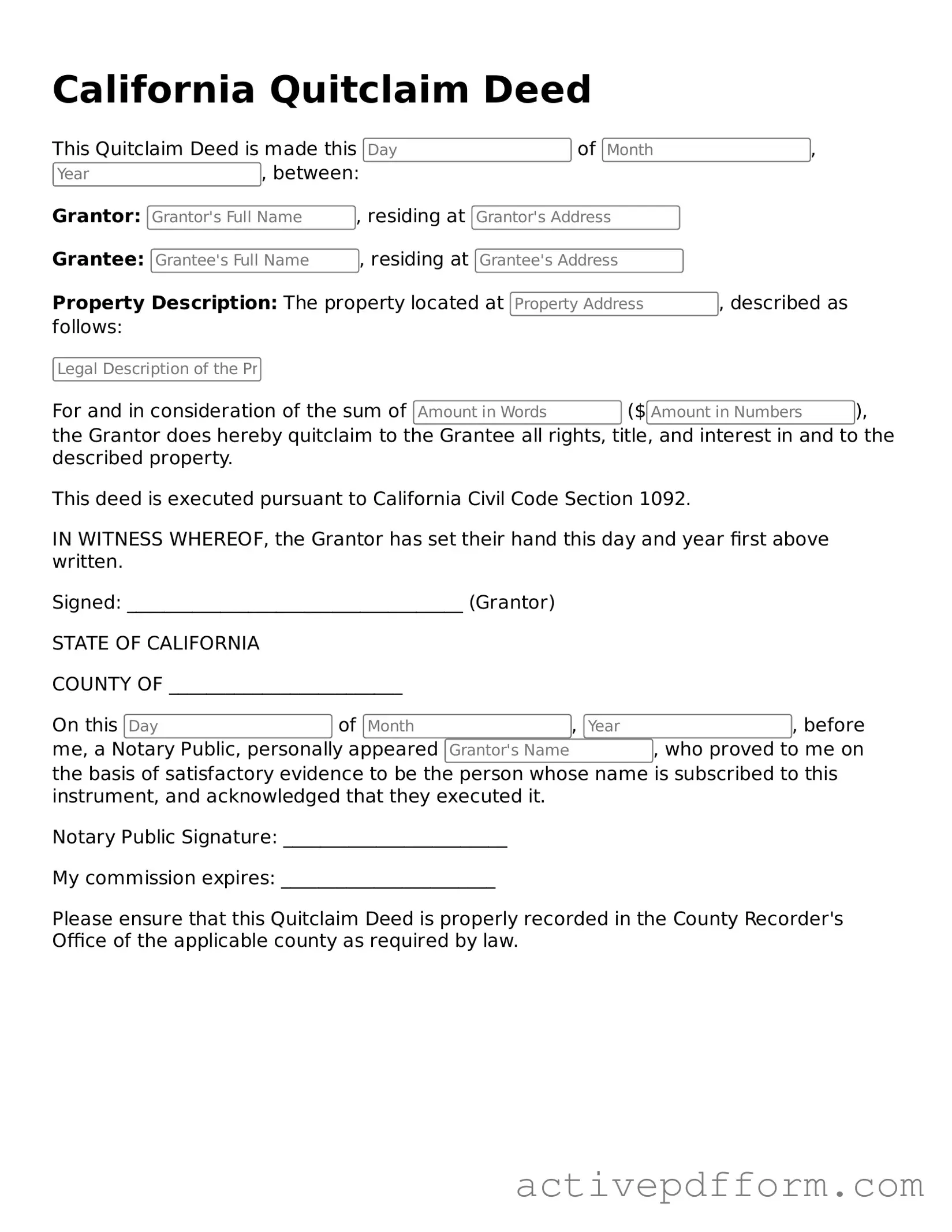What is a Quitclaim Deed in California?
A Quitclaim Deed is a legal document used to transfer ownership of real estate from one person to another. Unlike other types of deeds, a Quitclaim Deed does not guarantee that the person transferring the property has clear title. Instead, it simply conveys whatever interest the grantor has in the property, if any. This makes it a useful tool for situations like transferring property between family members or resolving title issues.
When should I use a Quitclaim Deed?
Consider using a Quitclaim Deed when you want to transfer property without the complexities of a traditional sale. Common scenarios include transferring property between spouses during a divorce, adding a spouse’s name to a title, or gifting property to a family member. However, it’s essential to understand that this type of deed does not provide any warranties regarding the property’s title.
How do I complete a Quitclaim Deed in California?
To complete a Quitclaim Deed in California, you will need to provide specific information. This includes the names of the grantor (the person transferring the property) and grantee (the person receiving the property), a description of the property, and the date of the transfer. It’s important to ensure that all information is accurate and clearly written. After filling out the form, both parties must sign it in the presence of a notary public.
Is a Quitclaim Deed the same as a Warranty Deed?
No, a Quitclaim Deed is not the same as a Warranty Deed. A Warranty Deed provides a guarantee that the grantor has clear title to the property and the right to sell it. In contrast, a Quitclaim Deed offers no such guarantees. This distinction is crucial, especially for buyers who want to ensure that they are receiving a property free of liens or other claims.
Do I need to file the Quitclaim Deed with the county?
Yes, after executing the Quitclaim Deed, it must be filed with the county recorder’s office where the property is located. This step is vital for ensuring that the transfer of ownership is legally recognized. Filing the deed also protects the interests of the grantee by making the transaction part of the public record.
Are there any taxes associated with a Quitclaim Deed?
While transferring property using a Quitclaim Deed may not trigger a sales tax, there may still be other fees or taxes involved. For example, California may impose a documentary transfer tax, depending on the county. It’s wise to check with local authorities or consult a tax professional to understand any potential financial implications.
Can I revoke a Quitclaim Deed after it has been executed?
Once a Quitclaim Deed has been executed and recorded, it cannot simply be revoked. However, the grantor may create a new deed to transfer the property back, effectively reversing the original transaction. This process can be complicated, so seeking legal advice is advisable if you wish to make changes after the deed has been executed.
What if the property has a mortgage?
Transferring property with an existing mortgage using a Quitclaim Deed does not eliminate the mortgage obligation. The original borrower remains responsible for the mortgage, even if the property is transferred to someone else. It’s crucial to communicate with the lender before proceeding, as some mortgages contain due-on-sale clauses that could trigger the loan to be paid in full upon transfer.
Can I use a Quitclaim Deed for commercial property?
Yes, a Quitclaim Deed can be used for commercial properties as well as residential properties. The same principles apply regardless of the type of property being transferred. However, it’s essential to consider the implications of such a transfer, especially if the property is subject to leases or other agreements.
